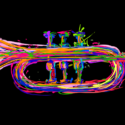
Cheela Srinivasa Rao walks us through the evolution of diary management and details his best practice
In this article, we will revisit the evolution of diary management, from the earliest times to the present day, and then discuss the best practice of diary management that will enhance your efficiency.
Having a diary means making a note of regular activities, on a daily, weekly, monthly, half-yearly or yearly basis.
1. The Mental Diary
In the past, everyone’s calendar was stored in their minds. Without pen or paper, people kept things simple and were successful.
Take an example of a farmer; in the past he would have a one-year plan for agriculture. He knew when the land was ready, how much water to give the crops, how many seeds and how much fertilizer is needed and at what time, how many workers should be involved, the size of the expected crop, the storage capacity required etc. He would plan this in his mind, implement the plan and get results.
2. The Paper Diary
With the paper diary, people began to store and calculate more information. Using our farmer example:
Marking up a calendar hanging on the wall with items they had purchased: milk, vegetables, groceries, servants, grass for cow/goat etc. At the end of the month they would calculate and pay for services they used. When cash was not readily available to all, most people would keep a small pocketbook and whatever provisions were taken from the shopkeeper, both the shopkeeper and the customer would write this in their books. At the end of the month they would tally this up. The total of the two books should be the same and payment was made accordingly. Transactions were done manually according to the notes marked up in their calendar. This method also applied to six monthly or yearly transactions such as insurance premiums, cultivation requirements and follow-ups, and other monthly transactions such as interest received or paid.
With weekly markets or fairs in villages, the specific day would be marked in the diary. On that day everyone nearby would come to that fair and purchase or sell items. There was no need for a special note as transactions occurred on that day; everybody was aware of that day, each week.
3. The Electronic Diary
Today we use both hard copy and electronic diaries on mobiles, computers, watches etc. for both our regular personal use and official work use. We record a lot more information such as: birthday reminders, school or college fees details/reminders, insurance premiums, medical reminders, personal/official meeting reminders, travel reminders, transport reminders, appraisal reminders, monthly payment reminders, license renewal, apartment/land/building fees, passport and visa renewal, electricity, cable, gas… the list goes on.
4. Diary and Calendar Management in the Office
This includes official and personal activities of the Assistant and executive in every organization. These activities now include such things as external/internal/customer meetings, blocked out on the calendar where all meeting details are saved; blocking out the executive’s calendar with all travel details; local transportation details; a database of all documents and paths; courier details; credit card information; air miles, card numbers, logins; passport and visa information; mobile bills; expenses; personal information and more.
5. Best Practice: The Daily Log File
For any planned event I use a four-way tracking system. The event is blocked out on the electronic calendar, I write the event on my desktop calendar, then the executive writes the event on his desktop calendar on his table and he also writes it on his calendar. I have access to the executive’s calendar and check for events. Most of the meetings are repeated over time and consolidating all these for the last year can be difficult.
In our office, we maintain an electronic diary in an Excel sheet. In this, I enter the activities every day: meetings, personal details, travel, transportation, courier details etc. All activities in the Managing Director’s office are logged in this spreadsheet. This log file is a continuous process and has been used for a long time. I have maintained this logbook for the last 8 years and now I have nearly 8,000 records. Any time any information is needed, I can just sort/filter and get information with one command. I can make an entry of an event, meeting or activity and pull data for the last few years on it as well.











Good one!
Very nicely written and expressed articles. Keep up the good work buddy..